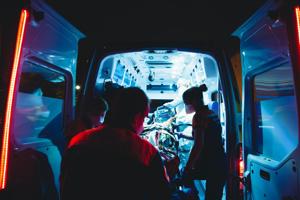
08 Feb Yuma fire shares difference between Fire Engine & Ambulance
YUMA — So what is the difference between a Fire Engine and a Paramedic Transport unit (ambulance)?
Some might say that one is a lot bigger, can seat more passengers, and carries water and hoses to extinguish large fires, but if it involves an emergency medical response, there is not much difference.
All of the Yuma Fire units are Advanced Life Support (ALS) units. This means they each will have at least one paramedic on board, and both would have the same advanced life support equipment and medication administration capabilities.
The biggest difference is that the Paramedic Unit is also designed to transport patients.
Paramedics receive advanced medical training (approximately 2000 hours) to become certified and are continuously trained and evaluated to maintain their certifications. This is necessary for Paramedics to be the eyes, ears, and hands of the emergency room doctor. Equipment advances (like 12 lead heart monitoring), and new capabilities (such as Tactical Emergency Medical Support to work with law enforcement in “active shooter” situations) continue to be added to our paramedic’s responsibilities.
Yuma Fire often is asked why a Fire Engine is sent on an emergency medical call. Emergency medical calls make up the majority of calls for service that modern fire departments respond to. To make the best use of resources, equipment, and personnel needs to be able to do double duty.
In addition, many procedures leading up to the transport of a patient may also be best handled with the extra personnel assigned to an engine company. Critical care tasking for cardiac arrest cases can also take additional emergency medical personnel.
When a fire engine, or ladder truck, arrives first, they are not there to transport you, they were just the closest Paramedic unit. The goal of the Yuma Fire Department is to get advanced life support to city residents as soon as possible.
